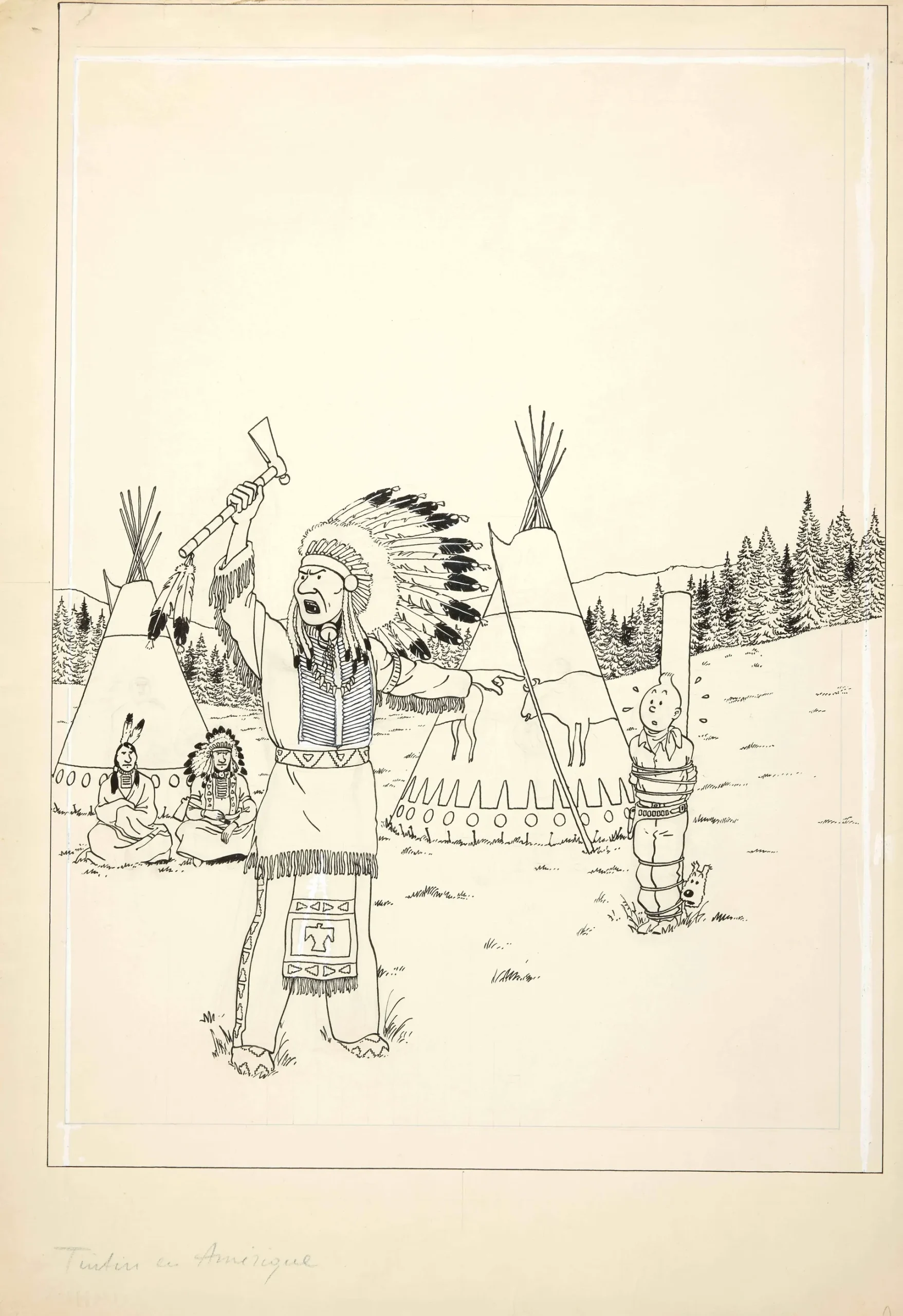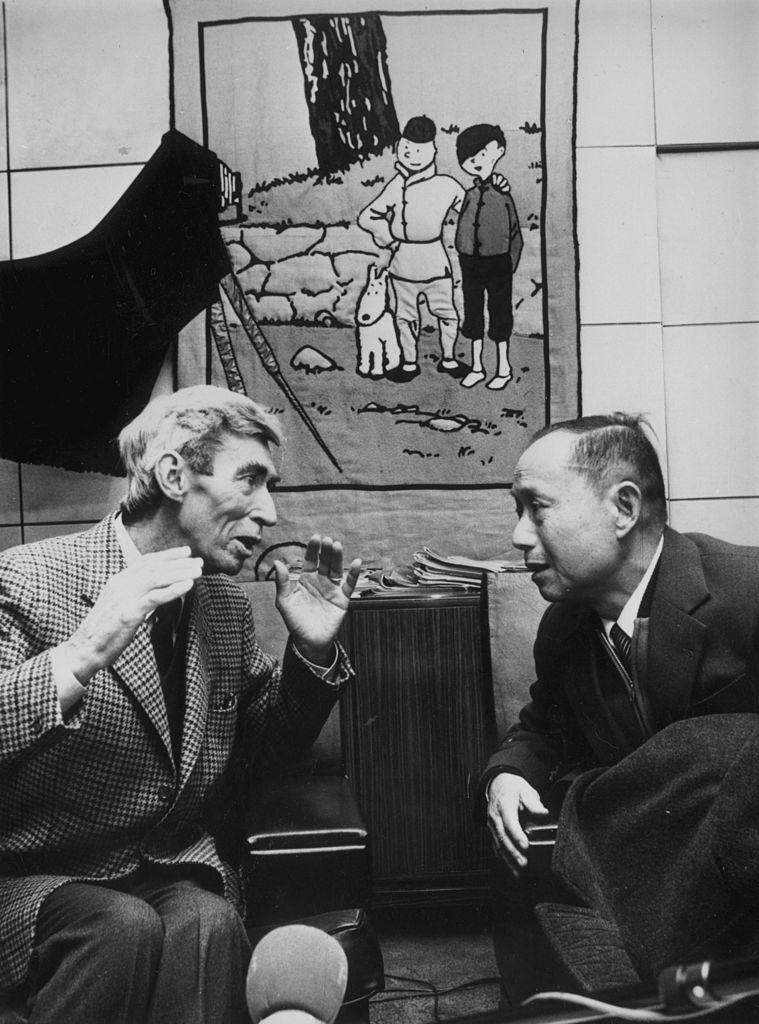
The drawing was made using Indian ink, graphite, and blue pencil by Belgian cartoonist Hergé (born Georges Remi). Last week’s sale sets the world record for the famed artist’s most valuable original black-and-white drawing.
Titled Tintin in America and dating back to 1942, the drawing was used for the colour edition of the 1946 book of the same name.
Artcurial has a history of selling Tintin works. In early 2021, it sold a rejected Tintin cover for a total of $3.8m, including the buyer’s premium. That watercolour work dated back to 1936, depicting Tintin and his dog Snowy hiding in a porcelain jar during their travels in China, set during the Japanese invasion of 1931.
The 2021 sale broke the world record for a comic book work of art.
Tintin’s value as a famous and commercial export continues long after The Adventures of Tintin was originally published. Former French leader Charles de Gaulle once famously said: “My only international rival is Tintin.”

18th March 1981: Belgian cartoonist and creator of Tintin, Herge (George Remi) (1907 – 1983), welcomes his old Chinese friend Tchang back to Belgium after 46 years apart. Herge based a character in two of the Tin Tin books (‘The Blue Lotus’ and ‘Tintin In Tibet’) upon Tchang, a retired professor living in Shanghai. (Photo by Keystone/Getty Images)
More recently, the Tintin comics have attracted criticism. The depiction of African characters in 1930’s Tintin in the Congo is decried as overtly racist, showing the Belgian boy detective “civilising the natives”, while Tintin in the Land of the Soviets is, according to The Atlantic, “so transparent in its anti-communist propaganda that Hergé himself tried to suppress its publication in later years.”
The depiction of Native Americans, as seen in the 1942 drawing, is more nuanced. Hergé diverged from the widely perpetuated stereotype of savages, treating them with sympathy. He also insisted on keeping a scene where Blackfoot Native Americans were forced from their land by Americans, despite facing pressure from US publishers to remove it. According to biographer Pierre Assouline, this was the “strongest political statement” in the entire Tintin series.
Critics say the Native Americans are nonetheless shown to be gullible and naïve, like the Congolese.




